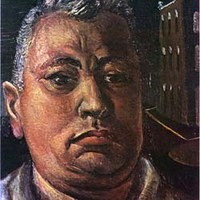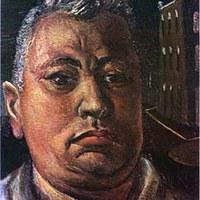Rio de Janeiro (Brasil), 1897 -1976
By Francisco Alambert
One of the creators of the Modern Art Week in São Paulo, Di Cavalcanti began his career publishing drawings and caricatures in the magazine Fon-Fon, from Rio de Janeiro, in 1914. Two years later, he participated in a group exhibition at the Humorists’ Salon and began studying Law, which he did not complete. He moved to São Paulo, where he came into contact with artists and intellectuals who joined him in the artistic renewal movements. He attended the studio of the German painter, with an Impressionist background, George Elpons, and in 1917 held his first solo exhibition at the editorial office of the newspaper A Cigarra, in São Paulo. In 1919, he illustrated the book Carnaval by the modernist poet Manuel Bandeira. Between 1923 and 1925, he lived in Paris, meeting, among others, Picasso, Braque, and Matisse, and also working as a correspondent for the newspaper Correio da Manhã.
While traveling through Europe, he encountered classical painters who influenced his work, as well as the works of Delacroix, Gauguin, and Mexican muralists. He returned to Rio de Janeiro in 1925, where four years later he created Samba e Carnaval at the João Caetano Theater, considered one of the first modernist panels in Latin America. He joined the Communist Party, a period when social themes and concerns with creating images connected to national life entered his work. Paintings such as Seated Woman made the theme of the Brazilian “mulata,” her social condition, and sensuality famous, marking his works. In 1935, he returned to Paris, where he lived until 1940, before returning to São Paulo. In 1937, he was awarded for decorating the Pavilion of the Franco-Brazilian Company at the Technical Art Exhibition in Paris. He executed several panels, published albums with engravings and screen prints, illustrated books, lottery tickets, and designed jewelry.
Also a writer, journalist, and poet, Di Cavalcanti published books (Viagem da minha vida, 1955, and Reminiscências líricas de um perfeito carioca, 1964) and contributed to newspapers and magazines. He participated in several exhibitions in Brazil and abroad, where he received awards: at some São Paulo Biennials (at the II Biennial he shared the Best National Painter award with Alfredo Volpi, and at the VII he was honored with a special room), at the XXVIII Venice Biennale (in the 1950s he had refused to participate in the Venice show), and at the II Inter-American Biennial in Mexico, where he received the Gold Medal. In 1954, the Museum of Modern Art in Rio de Janeiro presented a major retrospective of his work, an event repeated in 1971 at the Museum of Modern Art in São Paulo.
Di Cavalcanti exhibited his works in major museums worldwide, with some of his best-known works including Family (Museum of Art of Montevideo), Scene brésilienne (Museum of Modern Art of Paris), Via Sacra (Brasília Cathedral), and Five Girls from Guaratinguetá (Museum of Art of São Paulo, MASP).
In 1976, his funeral in Rio de Janeiro was filmed by Brazilian filmmaker Glauber Rocha, resulting in the experimental short film titled Di, which honors his work. However, the film was legally blocked by the artist’s family.





